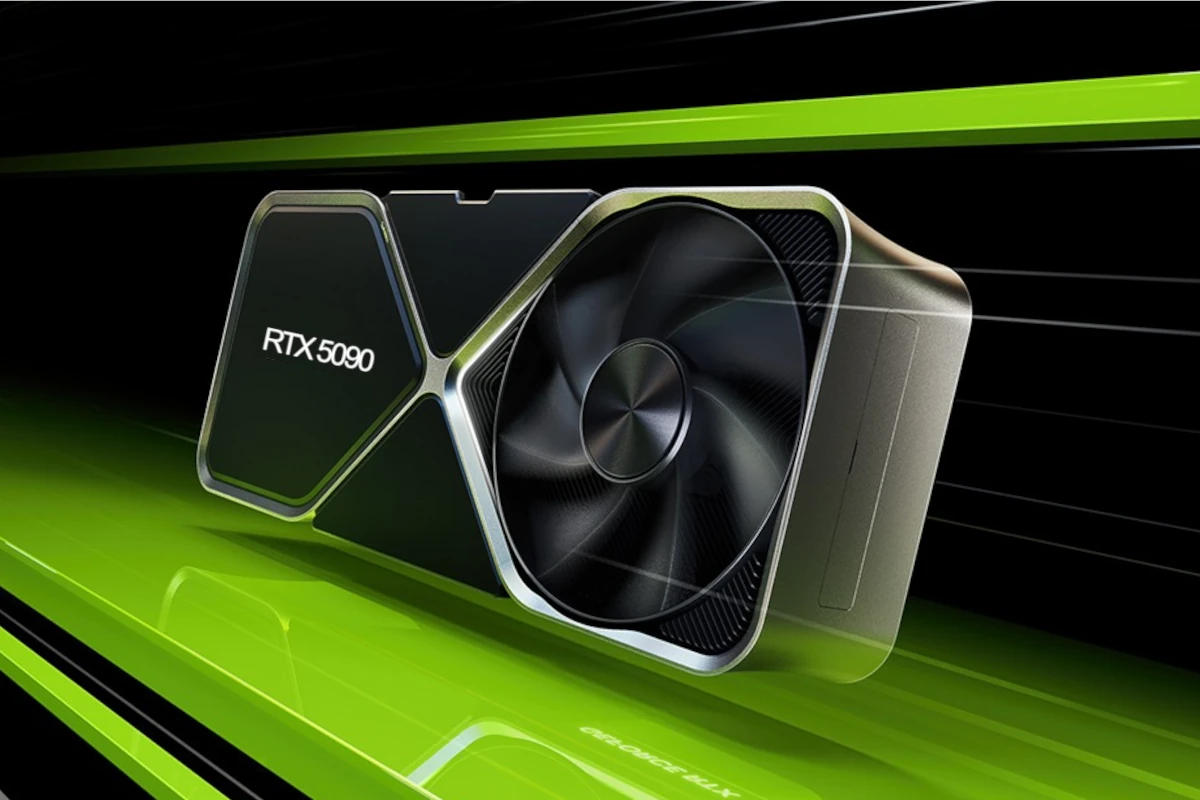NVIDIA is a company which specialises in AI, and is a software platform which creates various types of games. As of 2023, NVIDIA has control over 80% of the market for GPU semiconductor chips. They released their new chip every six months instead of past records which were 18 months. They sped up their process to get better results. However they took the help of AI, neural shaders and DLSS 4. They created the next generation of GeForce RTX GPUs and it contains stunning visuals and has a 2x performance boost. So let’s dive into it more!
GeForce RTX 50 Series launch
NVIDIA introduced the EForce RTXTM 50 Series desktop and laptop GPUs at the CES trade launch. CES is the biggest and powerful event for technology. The GeForce RTX 50 Series is powered by the NVIDIA Blackwell architecture, fifth-generation Tensor Cores, and fourth-generation RT Cores. It also offers AI driven displays with digital human technologies, geometry, lighting, and neural shaders. Moreover, they include up to 32GB of VRAM to handle large 3D projects, as well as ninth-generation NVIDIA encoders for sophisticated video editing and live streaming.
Also read : Top Technology Companies in the World: Leaders in Innovation
New Features of GeForce RTX 50
The new GPUs come with new software updates. RTX video and RTX remix are two new AI-powered NVIDIA Broadcast effects. The GeForce RTX 5090 GPU is the fastest GeForce RTX GPU because it has 92 billion transistors along with over 3,352 trillion AI operations per second (TOPS) of processing power. This performs better than the previous model because it works 2 times faster than that. Mainly because, Blackwell focused on architectural advancements and DLSS 4.
Generative AI era
This model has been built for the new AI generative era. For many creators, generative AI may produce amazing results, but even with the newest hardware, generative AI can be challenging to use. The models get more complicated and larger.
For example, the Flux.1 model can produce photos in ust 15 seconds. With the 30 steps done, a GeForce RTX 4090 with FP16 creates the images. However, it takes less than 5 seconds to generate an image using a GeForce RTX 5090 with FP4. With a brand new NVIDIA AI Blueprint for 3D-directed generative AI based on FLUX.1 [dev], artists will find that they have a lot more control in the production of text-based picture output. This AI Blueprint will be available as an NVIDIA NIM microservice. For directing the artificial intelligence in the development of images, it is possible for producers to make simple 3D objects, made either intentionally or in other ways, then place these up inside an array within a 3D explainer like Blender.
Improvements in Videos
They also worked on their video quality which made tech enthusiasts very happy. Since many consumer cameras reduce the Color information by 4:2:0 color compression. Although 4:2:0 is alright for browsing videos online, it is not enough for the professionals. The professionals want the colour grade videos for a better quality. The 4:2:2 format is perfect for them as it gives twice as much color information with just a 1.3x increase in RAW file size. However, decoding 4:2:2 is quite difficult because of its larger file sizes. Smooth multi-camera video editing is made easier though because of the hardware support of GeForce RTX 50 Series GPUs. It can decode upto eight times the 4K 60 frames per second.
Better live streaming experience
Live streaming has gained wide attention from people all around the world. Many people chose this as a career and need to go live to interact with their audiences. They also play games or make a reaction with the help of it. Nevertheless, top streamers can afford to hire others to split the work but many of the streamers have to handle it all alone and take responsibility of their own. The Streamlabs Intelligent Streaming Assistant is being developed in partnership with NVIDIA and Inworld AI by Streamlabs, a Logitech brand and a top supplier of streaming software and solutions for content producers.
The NVIDIA broadcast has improved its features by background noise reduction , virtual backdrop, and eye contact effects. Now they have an improved user interface that lets users apply many effects at once.
3D render performance
The GeForce RTX 5090 GPU has 32GB of GPU memory, which is 33% more than the GeForce RTX 4090 GPU and the most of any GeForce RTX GPU to date. This enables 3D artists to use numerous apps at once to create larger, more complex environments. Additionally, the fourth-generation RT Cores in the new RTX 50 Series can run 3D applications 40% quicker.
Also read : 7 Fun Facts About the Legendary Toyota Supra MK4
Conclusion
The NVIDIA GeForce RTX 50 Series GPUs define a leap forward in the performance, capability and utility for gamers, creators and professionals. These are based on the latest Blackwell architecture, and bring revolutionary features such as DLSS 4, fifth-generation Tensor Cores, and AI features. With massive VRAM up to 32GB and astonishing processing power, they are all about generative AI, 3D rendering, video editing, and live streaming. With its user’s experience in mind and state-of-the-art technology at its core, NVIDIA’s work establishes a new standard for GPUs in the age of AI-enabled creativity and performance.
FAQ
1. What is the key feature of the GeForce RTX 50 Series?
The RTX 50 Series is powered by NVIDIA Blackwell architecture, offering improved AI performance, DLSS 4, and advanced RT Cores for better graphics rendering and generative AI capabilities.
2. How much VRAM does the GeForce RTX 5090 have?
The GeForce RTX 5090 GPU comes with 32GB of VRAM, the most of any GeForce RTX GPU to date.
3. How does the GeForce RTX 5090 perform compared to the RTX 4090?
The RTX 5090 delivers 2x faster performance than the RTX 4090.








